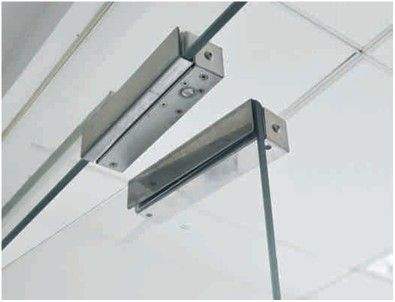
Magnetic door locks, commonly known as maglocks, are a reliable and effective solution for securing openings. In this blog post, we will delve into the workings of magnetic door locks, their fail-safe nature, and the essential components required for their safe management. Whether you're considering electronic access control or enhancing the security of your building, understanding the nuances of magnetic locks is crucial.
Magnetic door locks comprise an electromagnet and an armature. Typically, you mount the electromagnet on the frame and attach the armature to the door. When the door closes, the armature connects to the magnet, and a constant power source maintains the magnetic force, securely holding the door shut.
One key feature of magnetic locks is their fail-safe operation. In the event of a power failure or interruption, the magnet releases, allowing free movement through the opening. This fail-safe design is particularly important for emergency situations, requiring integration with fire alarm, automatic fire detection, or sprinkler systems. Activation of these systems cuts power to the lock, releasing the magnetic force for swift egress.
To ensure the safe operation of maglocks, additional components are necessary. Two main types of magnetic locks are commonly used:
A sensor or detector on the egress side signals the maglock to release when it senses a person approaching. Additionally, a manually operated emergency button or pull station provides immediate power cut, allowing free egress during emergencies. Proper positioning and clear signage are crucial for compliance with building codes.
Hardware mounted on the egress side directly controls the maglock. The lock releases when the hardware is used or in case of a power loss. This hardware should have a clear and easily operable method, meeting specific criteria for motion and accessibility.
Before incorporating a magnetic door lock into your security system, consider the following:
Magnetic locks must comply with local, state, and national fire and building codes. Local Authorities Having Jurisdiction (AHJ) will require electrical plans and permits to ensure safe egress under all conditions. At CDF Distributors, our security experts can guide you through the decision-making process, helping you determine if a magnetic lock is the best option for securing your building.
In addition to magnetic locks, CDF Distributors offers a comprehensive range of security solutions, including access control. Check out our website for a full list of products and services. Contact us today to start securing your premises effectively.
Understanding the intricacies of magnetic door locks is essential for making informed decisions about your building's security. With fail-safe features, safe management practices, and compliance considerations, magnetic locks offer a robust solution for controlled access. Partner with CDF Distributors for expert guidance and a wide array of security solutions tailored to your needs.